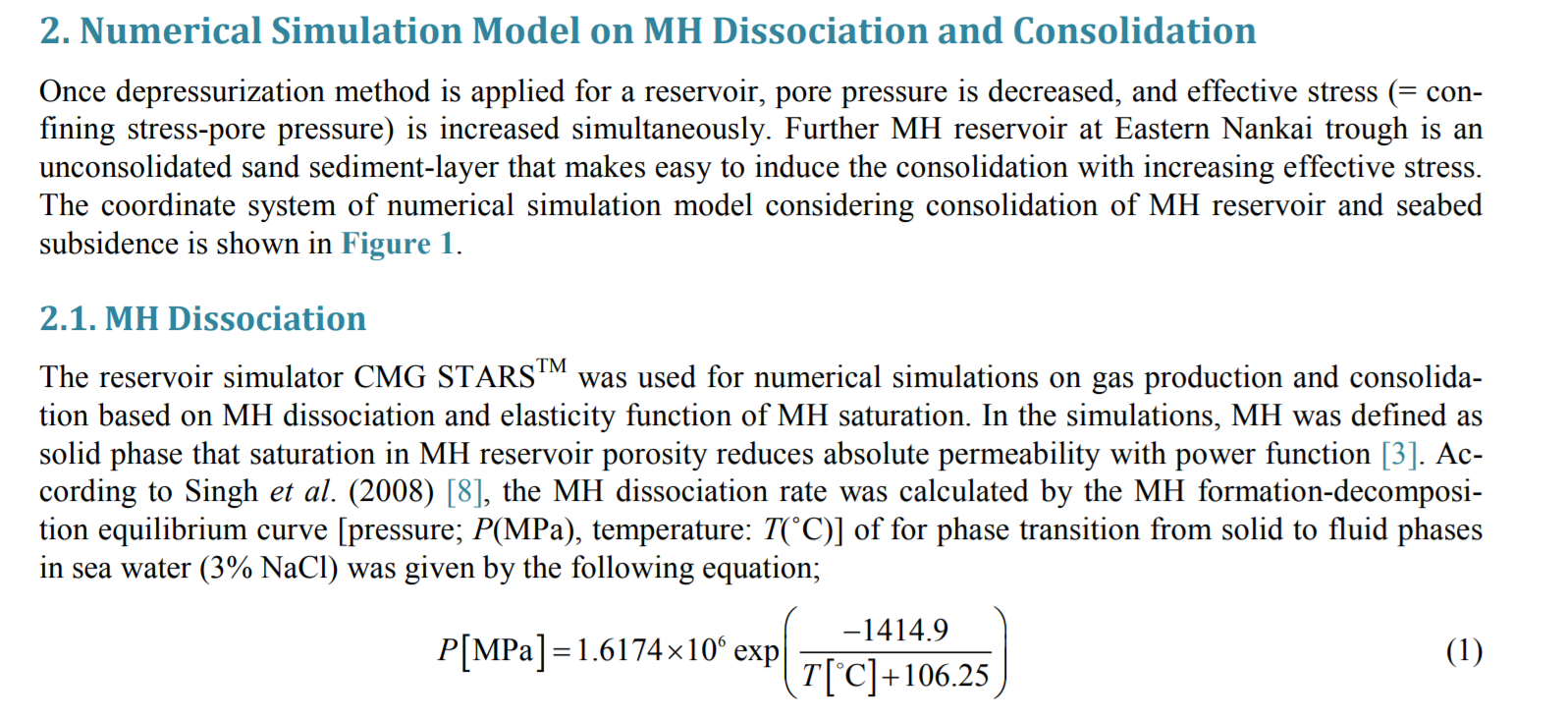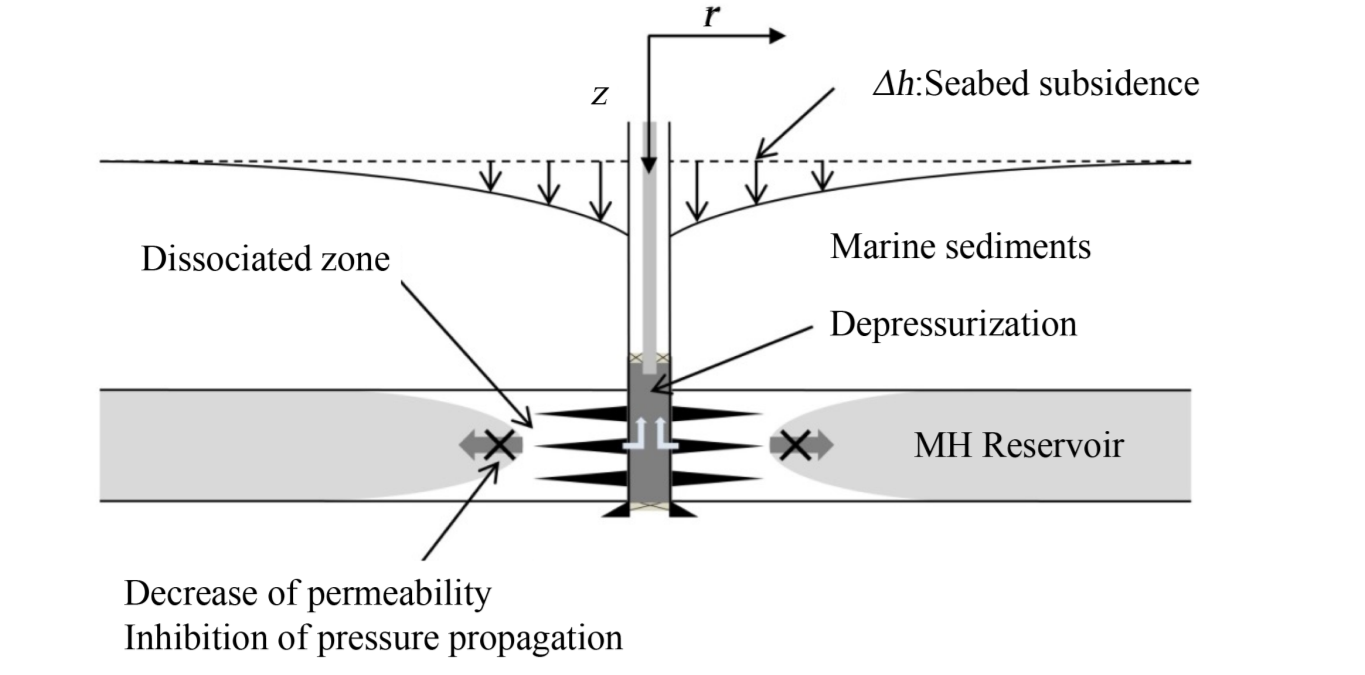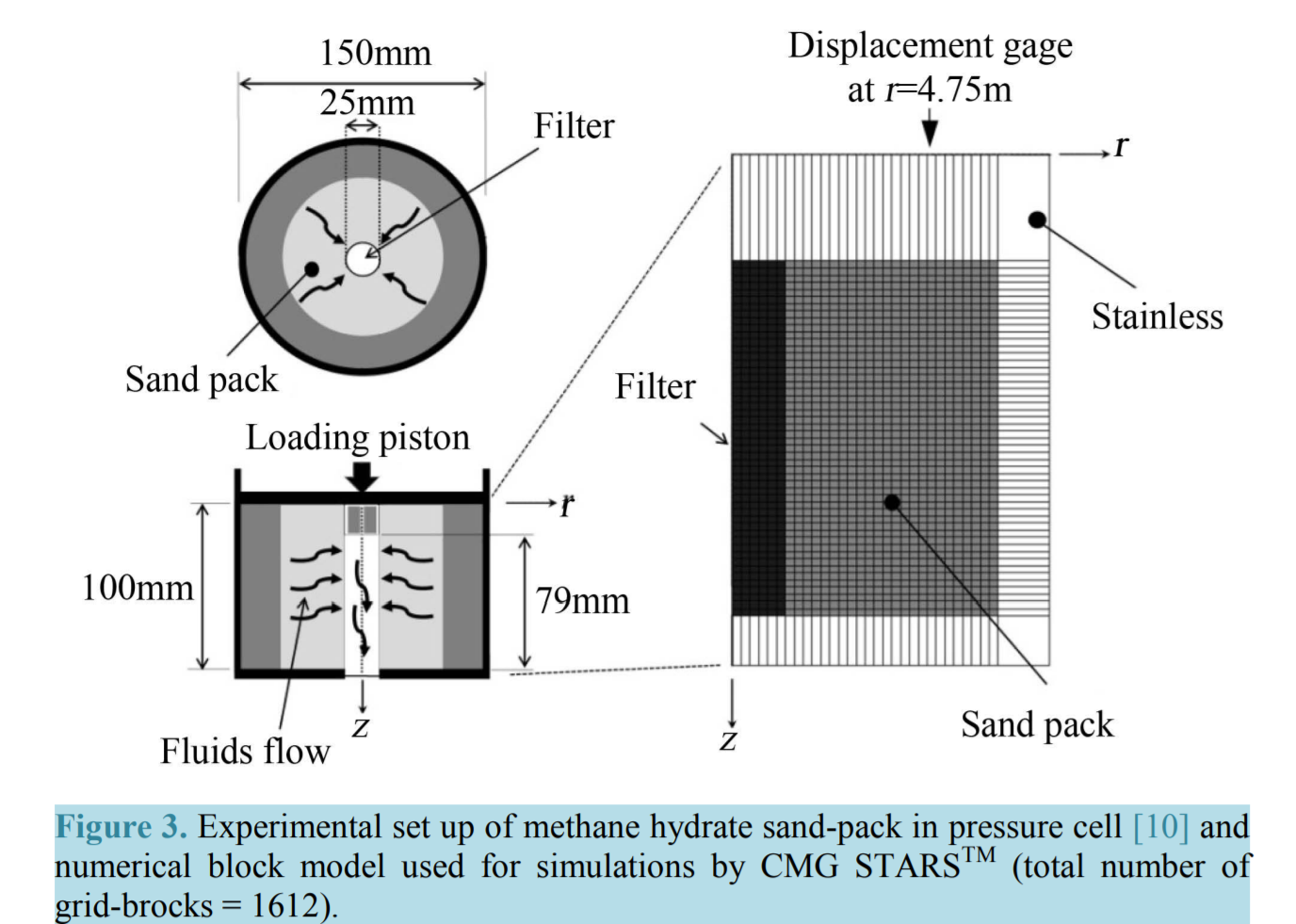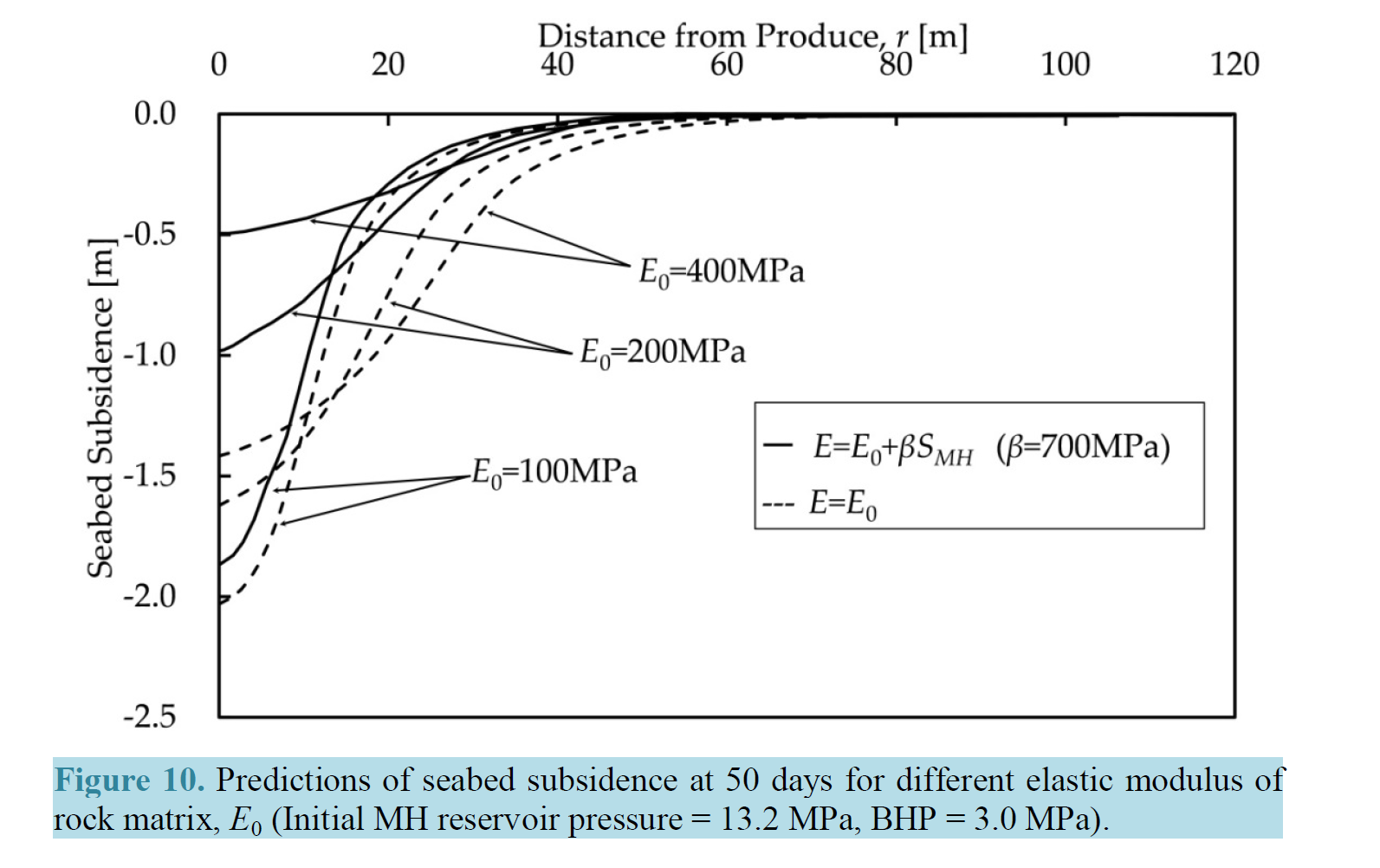Gas Production from Offshore Methane Hydrate Layer and Seabed Subsidence by Depressurization Method
对海上甲烷水合物(MH)地层天然气生产和海底沉降进行了固结效应数值模拟。甲烷水合物分解不仅受MH平衡线的影响,而且还受MH储层中降压固结(机械压实)的影响。首先,为了确认现有的有效应力固结模型,对Sakamoto等人(2009)提出的合成砂MH岩心的实验结果进行了产气和固结的历史拟合。
此外,将本研究结果和Kurihara等人(2009)的数值模拟结果进行了对比,以检查现模型在通过减压法进行MH油藏矿场规模采气的适用性。通过考虑减压法的固结效应,预测了MH储层中压力传播的延迟,和峰值产气速率下的经过时间。最后,对MH油藏采气过程中的海底沉降进行了数值模拟。MH储层产气50天后,预计最大海底沉降约为0.5至2 m,在MH饱和度=0时,弹性模量为400至100 MPa。
日本福冈九州大学地球资源工程系
Abstract
Numerical simulations on consolidation effects have been carried out for gas production from offshore methane hydrates (MH) layers and subsidence at seafloor. MH dissociation is affected by not only MH equilibrium line but also consolidation (mechanical compaction) depended on depressurization in the MH reservoir. Firstly, to confirm present model on consolidation with effective stress, the history matching on gas production and consolidation has been done to the experimental results using with synthetic sand MH core presented by Sakamoto et al. (2009).
In addition, the comparisons of numerical simulation results of present and Kurihara et al. (2009) were carried out to check applicability of present models for gas production from MH reservoir in field scale by depressurization method. The delays of pressure propagation in the MH reservoir and elapsed time at peak gas production rate were predicted by considering consolidation effects by depressurization method. Finally, seabed subsidence during gas production from MH reservoirs was numerically simulated. The maximum seabed subsidence has been predicted to be roughly 0.5 to 2 m after 50 days of gas production from MH reservoirs that elastic modulus is 400 to 100 MPa at MH saturation = 0.
Keywords
Methane Hydrate, Offshore Gas Production, Consolidation, Subsidence, Depressurization


Figure 1. Schematic figure showing gas production from MH layer and consolidation by depressurizing reservoir.


